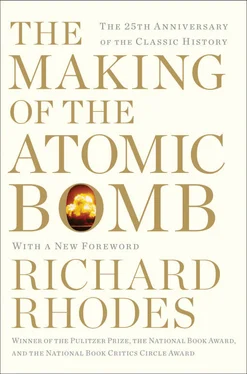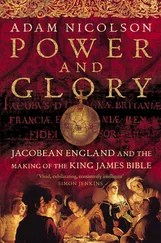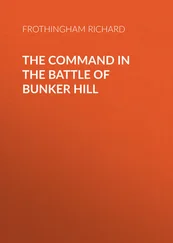The plant, which cost $35.5 million—a complex of 15 miles of roads, 36 miles of railroad track, waterworks and power plants and 550 buildings for the manufacture of chlorine, phosgene, chlorpicrin, sulfur chloride and mustard gas—was completed in less than a year. Ten thousand military and civilian workers staffed it. By the end of the war it was capable of filling 1.1 million 75-mm gas shells a month as well as several million other sizes and types of shells, grenades, mortar bombs and projector drums. “Had the war lasted longer,” the British observer notes, “there can be no doubt that this centre of production would have represented one of the most important contributions by America to the world war.” 368
* * *
Gas in any case was far less efficient at maiming and killing men than were artillery and machine-gun fire. Of a total of some 21 million battle casualties gas caused perhaps 5 percent, about 1 million. It killed at least 30,000 men, but at least 9 million died overall. Gas may have evoked special horror because it was unfamiliar and chemical rather than familiar and mechanical in its effects.
The machine gun forced the opposing armies into trenches; artillery carried the violence over the parapets once they were there. So the general staffs learned to calculate that they would lose 500,000 men in a six-month offensive or 300,000 men in six months of “ordinary” trench warfare. 369The British alone fired off more than 170 million artillery rounds, more than 5 million tons, in the course of the war. 370The shells, if they were not loaded with shrapnel in the first place, were designed to fragment when they exploded on impact; they produced by far the most horrible mutilations and dismemberings of the war, faces torn away, genitals torn away, a flying debris of arms and legs and heads, human flesh so pulped into the earth that the filling of sandbags with that earth was a repulsive punishment. Men cried out against the monstrousness on all sides.
The machine gun was less mutilating but far more efficient, the basic slaughtering tool of the war. “Concentrated essence of infantry,” a military theorist daintily labeled it. 371Against the criminally stubborn conviction of the professional officer corps that courage, élan and naked steel must carry the day the machine gun was the ultimate argument. “I go forward,” a British soldier writes of his experience in an attacking line of troops, “…up and down across ground like a huge ruined honeycomb, and my wave melts away, and the second wave comes up, and also melts away, and then the third wave merges into the ruins of the first and second, and after a while the fourth blunders into the remnants of the others.” 372He was describing the Battle of the Somme, on July 1, 1916, when at least 21,000 men died in the first hour, possibly in the first few minutes, and 60,000 the first day. 373
Americans invented the machine gun: Hiram Stevens Maxim, a Yankee from Maine; Colonel Isaac Lewis, a West Pointer, director of the U.S. Army coast artillery school; William J. Browning, a gunmaker and businessman; and their predecessor Richard Jordan Gatling, who correctly located the machine gun among automated systems. “It bears the same relation to other firearms,” Gatling noted, “that McCormack’s Reaper does to the sickle, or the sewing machine to the common needle.” 374The military historian John Keegan writes:
For the most important thing about a machine-gun is that it is a machine, and one of quite an advanced type, similar in some respects to a high-precision lathe, in others to an automatic press. Like a lathe, it requires to be set up, so that it will operate within desired and predetermined limits; this was done on the Maxim gun… by adjusting the angle of the barrel relative to its fixed firing platform, and tightening or loosening its traversing screw. Then, like an automatic press, it would, when actuated by a simple trigger, begin and continue to perform its functions with a minimum of human attention, supplying its own power and only requiring a steady supply of raw material and a little routine maintenance to operate efficiently throughout a working shift. 375
The machine gun mechanized war. Artillery and gas mechanized war. They were the hardware of the war, the tools. But they were only proximately the mechanism of the slaughter. The ultimate mechanism was a method of organization—anachronistically speaking, a software package. 376“The basic lever,” the writer Gil Elliot comments, “was the conscription law, which made vast numbers of men available for military service. 377The civil machinery which ensured the carrying out of this law, and the military organization which turned numbers of men into battalions and divisions, were each founded on a bureaucracy. The production of resources, in particular guns and ammunition, was a matter for civil organization. The movement of men and resources to the front, and the trench system of defence, were military concerns.” Each interlocking system was logical in itself and each system could be rationalized by those who worked it and moved through it. Thus, Elliot demonstrates, “It is reasonable to obey the law, it is good to organize well, it is ingenious to devise guns of high technical capacity, it is sensible to shelter human beings against massive firepower by putting them in protective trenches.”
What was the purpose of this complex organization? Officially it was supposed to save civilization, protect the rights of small democracies, demonstrate the superiority of Teutonic culture, beat the dirty Hun, beat the arrogant British, what have you. But the men caught in the middle came to glimpse a darker truth. “The War had become undisguisedly mechanical and inhuman,” Siegfried Sassoon allows a fictional infantry officer to see. “What in earlier days had been drafts of volunteers were now droves of victims.” 378Men on every front independently discovered their victimization. Awareness intensified as the war dragged on. In Russia it exploded in revolution. In Germany it motivated desertions and surrenders. Among the French it led to mutinies in the front lines. Among the British it fostered malingering.
Whatever its ostensible purpose, the end result of the complex organization that was the efficient software of the Great War was the manufacture of corpses. This essentially industrial operation was fantasized by the generals as a “strategy of attrition.” The British tried to kill Germans, the Germans tried to kill British and French and so on, a “strategy” so familiar by now that it almost sounds normal. It was not normal in Europe before 1914 and no one in authority expected it to evolve, despite the pioneering lessons of the American Civil War. Once the trenches were in place, the long grave already dug (John Masefield’s bitterly ironic phrase), then the war stalemated and death-making overwhelmed any rational response. 379“The war machine,” concludes Elliot, “rooted in law, organization, production, movement, science, technical ingenuity, with its product of six thousand deaths a day over a period of 1,500 days, was the permanent and realistic factor, impervious to fantasy, only slightly altered by human variation.” 380
No human institution, Elliot stresses, was sufficiently strong to resist the death machine. 381A new mechanism, the tank, ended the stalemate. An old mechanism, the blockade, choked off the German supply of food and matériel. The increasing rebelliousness of the foot soldiers threatened the security of the bureaucrats. Or the death machine worked too well, as against France, and began to run out of raw material. The Yanks came over with their sleeves rolled up, an untrenched continent behind them where the trees were not hung with entrails. The war putrified to a close.
Читать дальше












